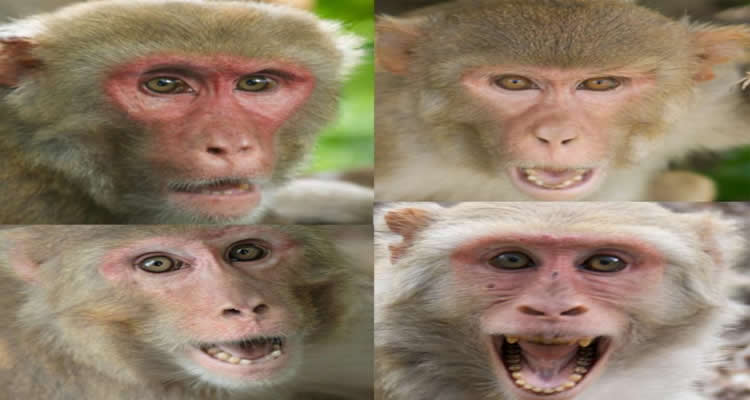The eyes are windows into the attention span at least.
Whether you’re taking a test or walking your dog across a busy street, your ability to tune out irrelevant sights and sounds in the environment — or your openness to detecting potential dangers — is crucial for success and survival.
Duke University researchers have looked into monkeys’ eyes for insight into how the brain processes distractions and they’ve found that changes to pupil size in response to distractors might predict how well the brain focuses on a goal.
The results, appearing Feb. 4 in the journal Neuron, may inform our understanding of attention deficit hyperactivity disorder or other disorders in which mechanisms for maintaining attention go awry. The results could also inspire new ways to improve performance in school or on the job.
In recent years, researchers have gained a greater appreciation of the importance of eye movements and pupil size for focusing the mind, and how the brain might regulate these behaviors.
Building on these studies, a new generation of cars may read our eyes for signs of distraction or sleepiness, for example. And in the clinic, pupils may help diagnose or identify people at risk for mental illnesses, such as anxiety, or the effectiveness of potential therapies.
“Where the eyes go and how much visual information gets in seems to be telling us a lot about what’s going on inside the brain,” said Michael Platt, director of the Duke Institute for Brain Sciences and the Center for Cognitive Neuroscience.
In the new study, Platt and his team trained monkeys to shift their gaze to a visual target in order to get a juice reward. During this task, the scientists then flashed images of other monkeys’ faces onto the periphery of the screen.
Monkeys typically find other monkeys impossible to ignore, and this experiment was no exception: the monkeys often failed at the reward task because they looked at the faces, especially if the faces depicted emotion.
When humans are torn between paying attention to two different things, it triggers a “conflict” circuit in a brain region called the dorsal anterior cingulate cortex (dACC) which is part of a larger brain structure controlling rational thought and emotions.
Using a tiny sensor implanted in the dACCs of the monkeys, Platt’s group was able to measure the electrical activity of single neurons. The team found a set of neurons that were active only when monkeys were completing the task and trying to override the distracting faces, but not when faced with either of the stimuli alone.
That was surprising, said Platt, because a distraction signal had never been found before in monkeys.
“I didn’t think we’d see conflict signals, because there had been other studies explicitly looking for signals like these but didn’t end up finding them,” Platt said, adding that as a result, scientists had started to believe that the activation might be part of what makes people uniquely human.
The more active the dACC neurons were, the better the monkeys were at tuning out the distracting faces in later trials. Even so, it was a difficult task.
“Experiencing conflict or making an error is something that normally gets us worked up, perhaps by activating our fight-or-flight response, which can interfere with our ability to focus on a task,” said first author R. Becket Ebitz, a postdoctoral researcher at Stanford University who conducted this study as a graduate student at Duke.
The fight-or-flight response causes a release of the stress hormone noradrenaline, widens the pupils and allows a person to take in more information about their environment.

Intriguingly, the monkeys’ pupils seemed to change in size to compensate for how difficult the task was. They constricted when the faces became harder to ignore, and the smaller they got, the better the monkeys performed in subsequent trials.
Although there were strong relationships among the activity of the neurons, pupil size and the ability to ignore faces, the three measures were merely correlated, Platt said. To know for sure whether the brain’s conflict signals and pupil size caused the monkeys to perform better requires further study.
The dACC doesn’t directly control pupil size, but it connects to another region of the brain that does. The dACC may well play a role in keeping us calm in the face of demands for our attention that might otherwise make us confused or stressed out, Ebitz said.
Platt will continue to probe the relationships between pupils, attention and vigilance in further studies. Hormones may well influence these measures: In a 2013 study, his group showed that monkeys performing the same gaze-shifting task did a better job overriding distractions if they had inhaled oxytocin, a hormone widely heralded for its role in social bonding which also has calming effects.
The research was supported by the National Institutes of Health (R01-MH-086712 and R01-MH-089484) and the U.S. Department of Defense (W81XWH-11-1-0584).
Contact: Karl Bates – Duke University
Source: Duke University press release
Image Source: The image is credited to Lauren Brent/Duke University and is adapted from the press release
Original Research: Abstract for “Neuronal Activity in Primate Dorsal Anterior Cingulate Cortex Signals Task Conflict and Predicts Adjustments in Pupil-Linked Arousal” by R. Becket Ebitz and Michael L. Platt in Neuron. Published online February 4 2015 doi:10.1016/j.neuron.2014.12.053






